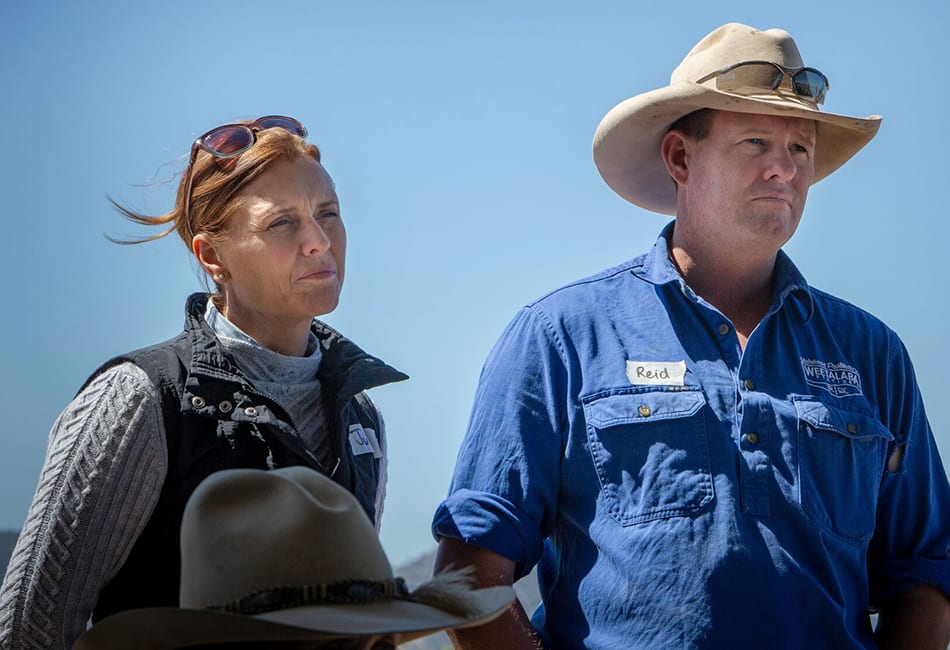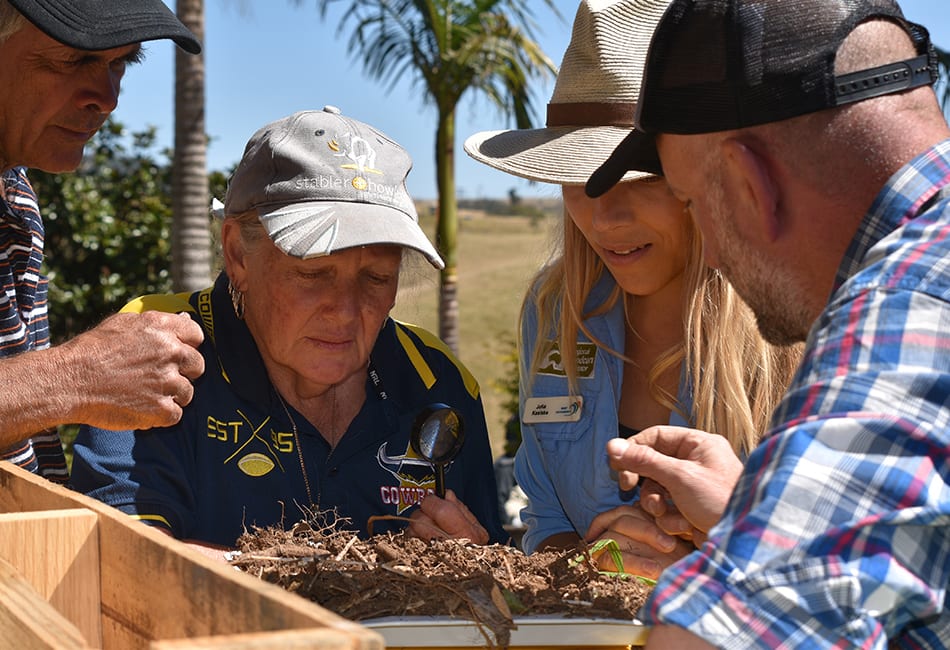
Changing the landscape with soil health
Dr Christine Jones, Elizabeth Lyons, Four Mile, and Peter Le Feuvre, Belmahar, inspecting root systems and soil aggregate. There is a huge appetite for soil, ecology and grazing information in the Dry Tropics region including Bowen and Collinsville areas, landholders want a better understanding of the science behind pasture management.
David Hardwick explains how to determine soil texture using the ribbon test.
Julie and Reid Muirhead, Weetalaba Station.
Graziers walked paddocks with a shovel to dig up clumps of soil to learn more about soil structure. They are adopting grazing management regimes to help restore hydrological balance and build new topsoil.
[wd_hustle id=”DiggingDeepercopy-2″ type=”popup”]Published details[/wd_hustle]
Graziers in the Bowen, Collinsville Ayr and Eungella regions have delved deeper into soil health with two of the best in the ‘soil health’ business – internationally renowned soil ecologist and founder of Amazing Carbon Dr Christine Jones, and agricultural ecologist David Hardwick, of Soil Land Food.
NQ Dry Tropics’ Landholders Driving Change (LDC) project hosted seven soil masterclasses across the Dry Tropics region.
They aimed to increase landholder understanding of biological mechanisms, especially the role of plant root exudates and their relationship with the microbial communities involved in soil building.
LDC project manager Lisa Hutchinson said this knowledge would help landholders make informed decisions about grazing practices to enhance soil health, increase plant productivity for drought resilience, and improve livestock nutrition and economic bottom lines.
“There is a huge appetite for a combination of soil, ecology and grazing information in the Dry Tropics region,” Mr Hutchinson said.
“Landholders are wanting a better understanding of the science behind pasture management.”
Grazier Reid Muirhead, of Weetalaba Station, Collinsville, said he hosted one of Christine Jone’s masterclasses because he wanted to learn more about how pasture management could affect pasture diversity and productivity, and how they the extent to which they nourished soil organisms.
“It was interesting to learn how these organisms are important to the cycling of nutrients and the maintenance of good soil structure, which in turn can have enormous positive effects on plant growth and animal production,” Mr Muirhead said.
Grazier Wayne Reading, of Borderway Ridge Station, Eungella, said he hosted one of David Hardwick’s masterclasses to gain practical skills to assess the condition of soil on land types across his property using the Rapid Assessment of Soil Health (RASH) approach.
“Learning to assess ground cover, water infiltration and soil texture, aggregate and soil pH, and soil organisms, and how to better understand soil tests results means I can make informed decisions to improve pasture,” Mr Reading said.
Ms Hutchinson said soil health knowledge would move landholders towards restoring hydrological balance on a catchment scale and therefore strengthen rural communities through their impact on farm profitability.
“This approach, including getting the best in the business to come into the region to workshop soil health, aligns with the overarching aims of the Landholders Driving Change project, working with landholders to reduce sediment on the Great Barrier Reef by targeting erosion hotspots and grazing land management practices,” Ms Hutchinson said.
Mick Sheehy (left), and Wayne Reading at David Hardwick’s Crediton workshop.
David Hardwick, Beth Reading, Juliane Kasiske examine the diversity of soil organisms.






